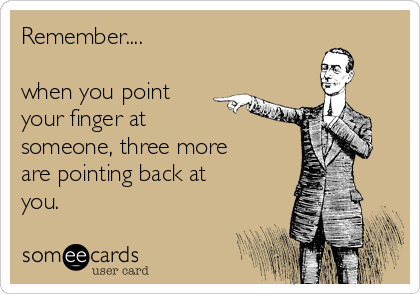
In State v. Bluford, the WA Court of Appeals Division I decided a trial court correctly joined a defendant’s multiple counts of robbery for one trial. The similarities between the crimes were adequate for the offenses to be cross admissible to establish a modus operandi.
The State charged Charles Bluford with nine felony counts. These included seven counts of Robbery in the First Degree plus a charge of Rape in the First Degree of one victim and Indecent Liberties of a separate victim.
The State initially charged Bluford under three different cause numbers, but moved to join all the counts for trial. Bluford moved to sever five of the counts from the others. The court considered these cross motions at the same hearing and joined all counts for trial.
The jury found Bluford guilty of eight counts and acquitted him of one count of Robbery. It sentenced him to life without the possibility of release. Bluford appeals.
The Court of Appeals began by discussing the statute and court rule regarding the “joinder” of criminal offenses. RCW 10.37.060 states the following:
When there are several charges against any person, or persons, for the same act or transaction, or for two or more acts or transactions connected together, or for two or more acts or transactions of the same class of crimes or offenses, which may be properly joined, instead of having several indictments or informations the whole may be joined in one indictment, or information, in separate counts; and, if two or more indictments are found, or two or more informations filed, in such cases, the court may order such indictments or informations to be consolidated.
Also, CrR 4.3 says the following:
Two or more offenses may be joined in one charging document, with each offense stated in a separate count, when the offenses, whether felonies or misdemeanors or both: (1) Are of the same or similar character, even if not part of a single scheme or plan; or (2) Are based on the same conduct or on a series of acts connected together or constituting parts of a single scheme or plan.
The court reasoned that the joinder rule promotes the public policy goal of conserving judicial resources. Also, joinder is appropriate unless it is so “manifestly prejudicial” that it outweighs the need for judicial economy. In other words, courts may not join offenses if it would prejudice the defendant.
The court applied the four-factors guide from State v. Cotten to determine whether prejudice results from joinder:
(1) the strength of the State’s evidence on each of the counts; (2) the clarity of the defenses on each count; (3) the propriety of the trial court’s instruction to the jury regarding the consideration of evidence of each count separately; and (4) the admissibility of the evidence of the other crimes.
The Court applied the Cotten factors.
First, the Court of Appeals reasoned that the trial court correctly determined that the strength of the State’s evidence for each count was equivalently strong.
Second, Bluford asserted a general denial for each count. Therefore, he could not have been prejudiced by inconsistent defenses because his defenses were all the same.
Third, Bluford argues that the court’s instructions to the jury at the end of the case did not instruct the jury that it could not consider the evidence of other crimes as propensity evidence. However, Bluford failed to request such an instruction. And the trial court is not required to give such an instruction if the defendant fails to request one.
Fourth, the court determined that the evidence of each count would be cross admissible for the other counts for the purpose of showing modus operandi. It reasoned that although ER 404(b) prohibits introducing evidence of other bad acts as propensity evidence, such evidence is admissible for other purposes, such as proof of motive, plan, or identity. Under the modus operandi exception, evidence of other bad acts is admissible to show identity if the method employed in the commission of crimes is so unique that proof that an accused committed one of the crimes creates a high probability that he also committed the other crimes with which he is charged. The modus operandi must be so unusual and distinctive as to be like a signature.
In Bluford’s case, the trial court determined that the crimes were cross admissible for the following reasons:
Each incident occurred within an approximately two month period. Each incident occurred during hours of darkness. Each incident occurred in the Seattle metro area. Each incident occurred in a residential area. The defendant was a stranger to each victim. In each incident, the victims were alone when . . . a male approached with a handgun and gave verbal demands to the victims. The descriptions of the handgun by the victims are similar. Four of the victims gave a description of the vehicle, which matches the vehicle the defendant was later found inside. Two of the three female victims were sexually assaulted during the course of the robberies. Although one of the female victims was not sexually assaulted during the robbery, she ran away at the time of the robbery, thereby limiting the opportunity for the defendant to sexually assault her . . . Therefore, although none of the incidents are a carbon copy of the others, the incidents are strikingly similar. Additionally, in each case the perpetrator approached the victim as he or she exited a car. And when the victim did not cooperate, the perpetrator forcefully took his or her property or assaulted the victim.
Consequently, modus operandi was proven. Finally, because Bryant failed to renew his motion to sever during trial, he technically failed to preserve for review the issue of severance.
Bluford’s convictions were upheld. However, the Court of Appeals vacated his sentence of life without the possibility of release and remanded for resentencing.
My opinion?
At trial, Prosecutors commonly try joining a defendant’s multiple offenses. As stated above, doing so creates judicial efficiency and shows propensity evidence under ER 404(b). Still, competent defense attorneys should try to sever multiple counts anyway; and most important RENEW THE MOTION DURING TRIAL. Failing to do so effectively waives the issue to be preserved for appeal.
Please contact my office if you, a friend or family member are charged with a crime. Hiring an effective and competent defense attorney is the first and best step toward justice.













